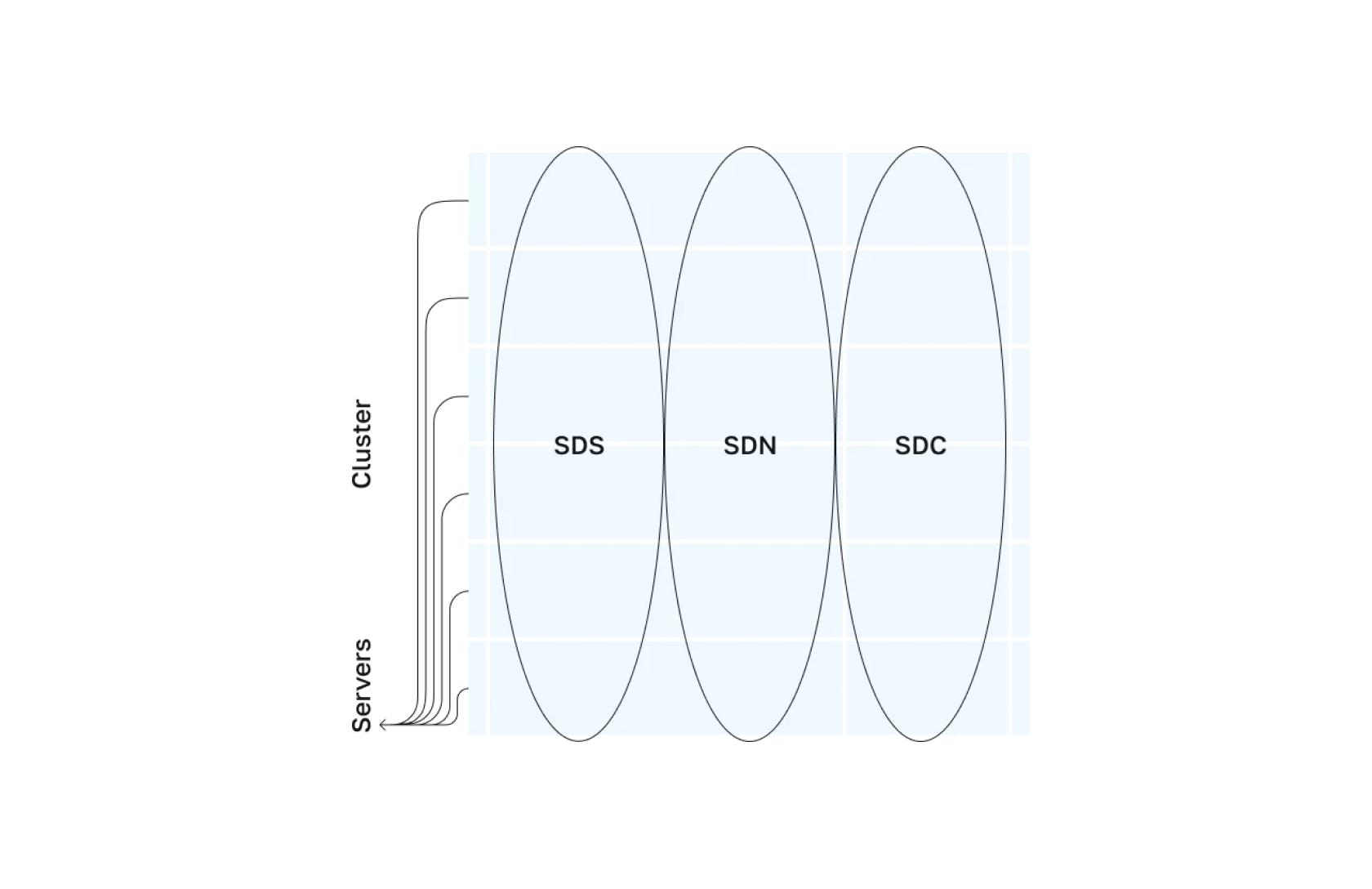vStack — hyperconvergent platform for creating modern and efficient enterprise IT infrastructure
What is hyperconvergence?
Hyperconvergent infrastructure is a software-defined IT infrastructure that integrates:
- SDC (Software Defined Computing);
- SDN (Software Defined Networking);
- SDS (Software Defined Storage).

Scenarios for using the hyperconvergent vStack platform
- Containerization (Kubernetes)
- Software development and testing environment
- Horizontally scalable software
- Virtual Desktops (VDI)
- Backup site
- Low-cost backup resources for operations
- Traditional infrastructure (on-premise)
- Infrastructure for remote offices
- Disposable VMs

Differences between hyperconvergent
infrastructure and classical
1/2
Classic IT infrastructure
The classic IT infrastructure is called convergent. It involves a large number of devices with dedicated roles, such as data storage, computing, networking, etc. Supporting a converged IT infrastructure requires a staff of qualified specialists, significant data center resources and equipment costs.
2/2
Hyperconvergent infrastructure
On the contrary, a hyperconvergent approach to creating an IT infrastructure makes it much easier by consolidating all the main roles within a single cluster, as well as reducing the cost of equipment, support and data center resources.
Our customers
vStack.
Get a consultation
Advantages of the hyperconvergent vStack platform
Optimization of equipment costs
Reducing the cost of IT staff
There is no dependence on the hardware vendor
Subscription or permanent license of your choice
Simpler IT infrastructure
Fast scaling and recovery
High cluster performance
Significantly lower consumption of data center resources
Who is suitable for the vStack hyperconvergent platform
- Service providers
- Development companies
- Fintech, banks
- GameDev
- Industrial companies
- Streaming services
- SaaS Suppliers
- Government agencies
- Retail

Our customers
vStack.
Get a consultation
Related solutions
VStack HCP
Hyperconverged infrastructure with managed virtual data center
VStack Enterprise Deck
Managing virtual enterprise resources in a single dashboard
VStack Cloud Panel
Service Control Panel for Cloud Providers
VStack Telco Cloud
Infrastructure for operation of CG-NAT, BRAS and DPI of telecom operators
Hyperconverged vStack platform
Hyperconverged vStack platform
Vstack Service Provider Program
Licensing program for cloud services based on vStack platform
